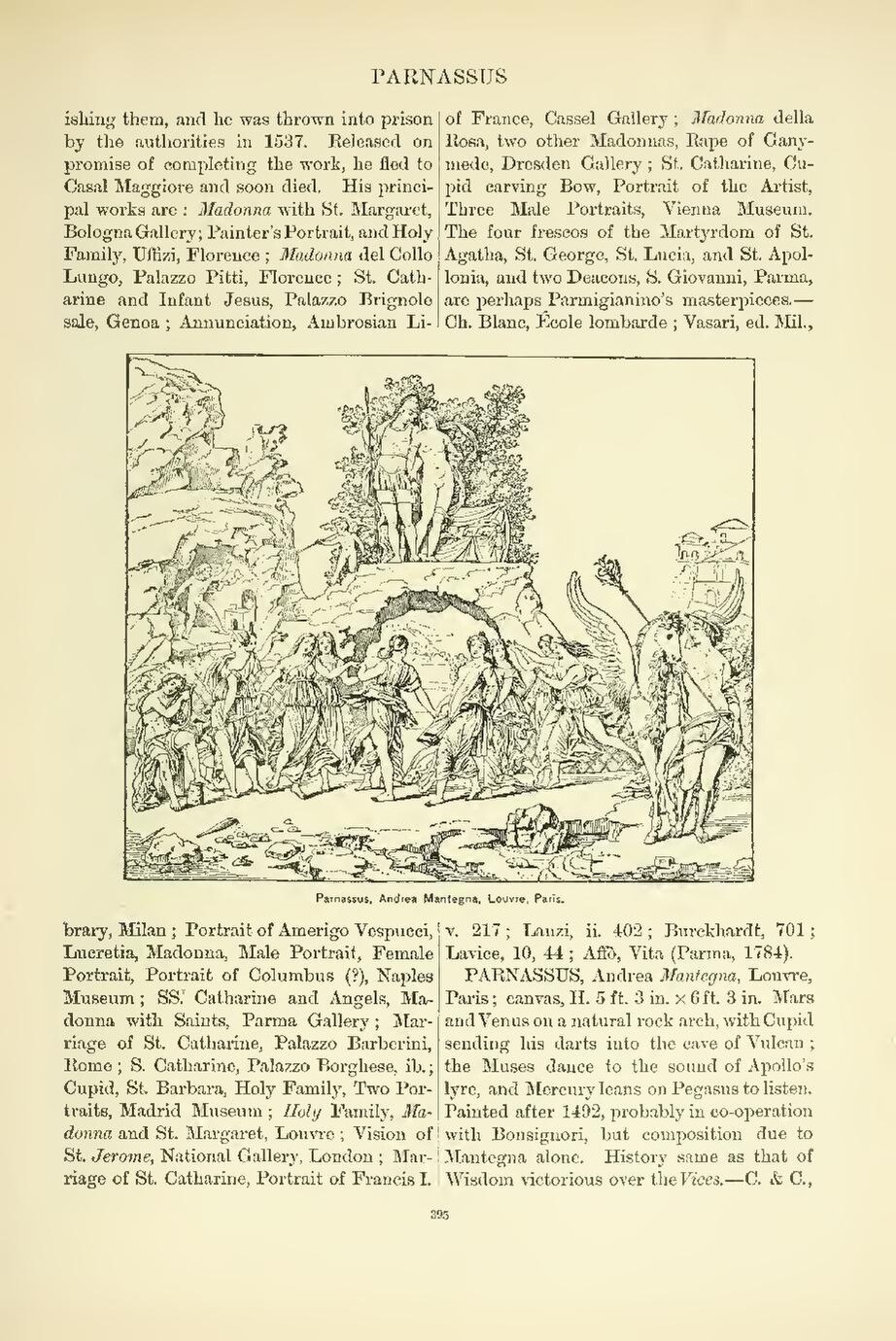- ishing them, and he was thrown into prison
by the authorities in 1537. Released on promise of completing the work, he fled to Casal Maggiore and soon died. His principal works are: Madonna with St. Margaret, Bologna Gallery; Painter's Portrait, and Holy Family, Uffizi, Florence; Madonna del Collo Lungo, Palazzo Pitti, Florence; St. Catharine and Infant Jesus, Palazzo Brignole sale, Genoa; Annunciation, Ambrosian Library, Milan; Portrait of Amerigo Vespucci, Lucretia, Madonna, Male Portrait, Female Portrait, Portrait of Columbus (?), Naples Museum; SS.' Catharine and Angels, Madonna with Saints, Parma Gallery; Marriage of St. Catharine, Palazzo Barberini, Rome; S. Catharine, Palazzo Borghese, ib.; Cupid, St. Barbara, Holy Family, Two Portraits, Madrid Museum; Holy Family, Madonna and St. Margaret, Louvre; Vision of St. Jerome, National Gallery, London; Marriage of St. Catharine, Portrait of Francis I. of France, Cassel Gallery; Madonna della Rosa, two other Madonnas, Rape of Ganymede, Dresden Gallery; St. Catharine, Cupid carving Bow, Portrait of the Artist, Three Male Portraits, Vienna Museum. The four frescos of the Martyrdom of St. Agatha, St. George, St. Lucia, and St. Apollonia, and two Deacons, S. Giovanni, Parma, are perhaps Parmigianino's masterpieces.—Ch. Blanc, École lombarde; Vasari, ed. Mil., v. 217; Lanzi, ii. 402; Burckhardt, 701; Lavice, 10, 44; Affò, Vita (Parma, 1784).
An image should appear at this position in the text. To use the entire page scan as a placeholder, edit this page and replace "{{missing image}}" with "{{raw image|Cyclopedia of painters and paintings (IA cyclopediaofpain03cham).pdf/417}}". Otherwise, if you are able to provide the image then please do so. For guidance, see Wikisource:Image guidelines and Help:Adding images. |
Parnassus, Andrea Mantegna, Louvre, Paris.
PARNASSUS, Andrea Mantegna, Louvre,
Paris; canvas, H. 5 ft. 3 in. × 6 ft. 3 in. Mars
and Venus on a natural rock arch, with Cupid
sending his darts into the cave of Vulcan;
the Muses dance to the sound of Apollo's
lyre, and Mercury leans on Pegasus to listen.
Painted after 1492, probably in co-operation
with Bonsignori, but composition due to
Mantegna alone. History same as that of
Wisdom victorious over the Vices.—C. & C.,
